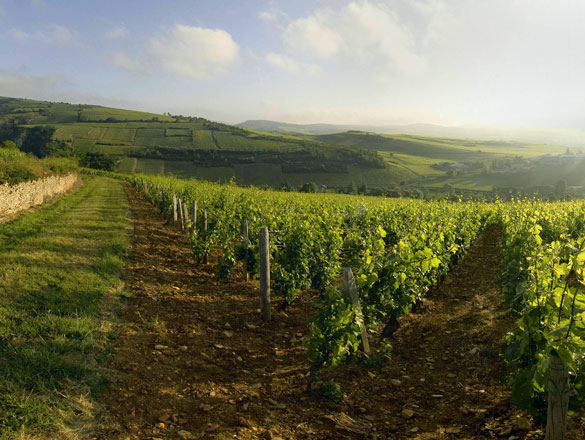

The vineyards of Bourgogne produce some great wines with a historical and international reputation. However, the region is not simply limited to its iconic appellations. In addition to its Village Premier Cru and Grand Cru AOCs, it also produces a range of wonderful Régionale and Village appellations to explore.
You will also find a full list of the Bourgogne’s Climats and lieux-dits on this page.
Check out the complete list of the 84 Bourgogne appellations.
However, your exploration has only just begun. Bourgogne wines have never before offered such high quality. Besides our range of internationally celebrated wines, try some of our lesser-known appellations where there are lots of surprises in store.
And for a fun way to find out more about the wines on offer, try out our “Which Bourgogne wine is right for me?” quiz, or check out Bourgogne Maps to take an interactive tour of the region.
Village appellation
VIGNOBLE DU MÂCONNAIS
6 janvier 1971
White wines only - Chardonnay
Area under production*:
1 hectare (ha) = 10,000 m2 = 24 ouvrées.
742.72 ha.
*In 2018
Appellation Village of the Mâconnais region (Saône-et-Loire).
On the label, this appellation may be followed by the name of the Climat of origin.
Producing communes: Chânes, Chasselas, Davayé, Leynes, Prissé, Saint-Vérand*, Solutré-Pouilly.
* The name of the commune is written with a final “d” (Saint-Vérand), omitted in the name of the appellation (SAINT-VÉRAN).

The colour is that of very pale yellow gold, brilliant and crystal-clear. The nose develops subtle fruit aromas (peach, pear) or acacia, honeysuckle and bracken, often over notes of fresh almond, hazelnut, cinnamon, butter, and sometimes honey. Exotic fruits are sometimes present, as are citrus notes (orange peel). On the palate, this white wine is dry and well-rounded, mineral (gun-flint) and lively from the first attack. Acidity and fatness come increasingly into play. The structure is harmonious, fresh and round.

Its clean, open attack and its citrussy notes call for dishes which can somewhat mitigate its ardour. An oily fish, poached or simply fried, will play this role, especially as the wine’s range of floral aromas respond splendidly to the fine salty flesh. Variations featuring seafood will also do well, as will risottos containing sea-food or mushrooms whose mellow texture will blend harmoniously with the acidity of the wine. It is also well-suited to goat cheeses, Bleu de Bresse, Comté, Beaufort, and Gruyère.
Serving temperatures: 9 to 11°C for young wines,11 to 13°C for older wines.

The SAINT-VÉRAN AOC, which was granted in 1971, lies in the South of the Mâconnais region, forming a belt around the appellation POUILLY-FUISSÉ.
As it is often the case in Bourgogne, the AOC embraces a number of villages from Prissé and Davayé lying to the North of the Rock of Solutré to Leynes, Chasselas, Chânes, part of Solutré-Pouilly and (of course) Saint-Vérand itself all lying to the south. The soils, ideally suited to the Chardonnay, produce only white wines.

The appellation SAINT-VÉRAN is split into two separate islands by its close relative Pouilly-Fuissé. Both occupy slopes forming part of the chain of hills to which the Rock of Solutré belongs. This rocky backbone is made of fossiliferous limestone of the Middle Jurassic. On the Western side are older (lias) rocks covered with grey marls on which the vineyards of Chasselas and Leynes occupy South and West-facing sites. The gentle Eastern slopes are composed of marly limestones on which are found the East-facing vineyards of Prissé and Davayé. At Chânes and Prissé, on the left bank of the little river Grosne, the vines grow on fossiliferous limestones, often overlain by a layer of clay-with-flints with “chailles”.
